Florida is unlike the rest of the U.S. in more than one way—that’s not exactly a secret. And that’s also very much true when it comes to national parks.
While many of America’s parks protect either mountain scenery or desert landscapes, the three national parks in Florida are primarily water-based.
The best gateway city to these extraordinary national parks is Miami, the southernmost major city in Florida. Even though it’s a city known mostly for its beaches, Art Deco architecture, Cuban culture and cuisine, and glitz and glamor, Miami also happens to be one of America’s greatest national park gateway cities.
Travel just a short distance south, southwest or west of Miami and you’ll end up in of the three South Florida national parks (and one amazing national preserve)
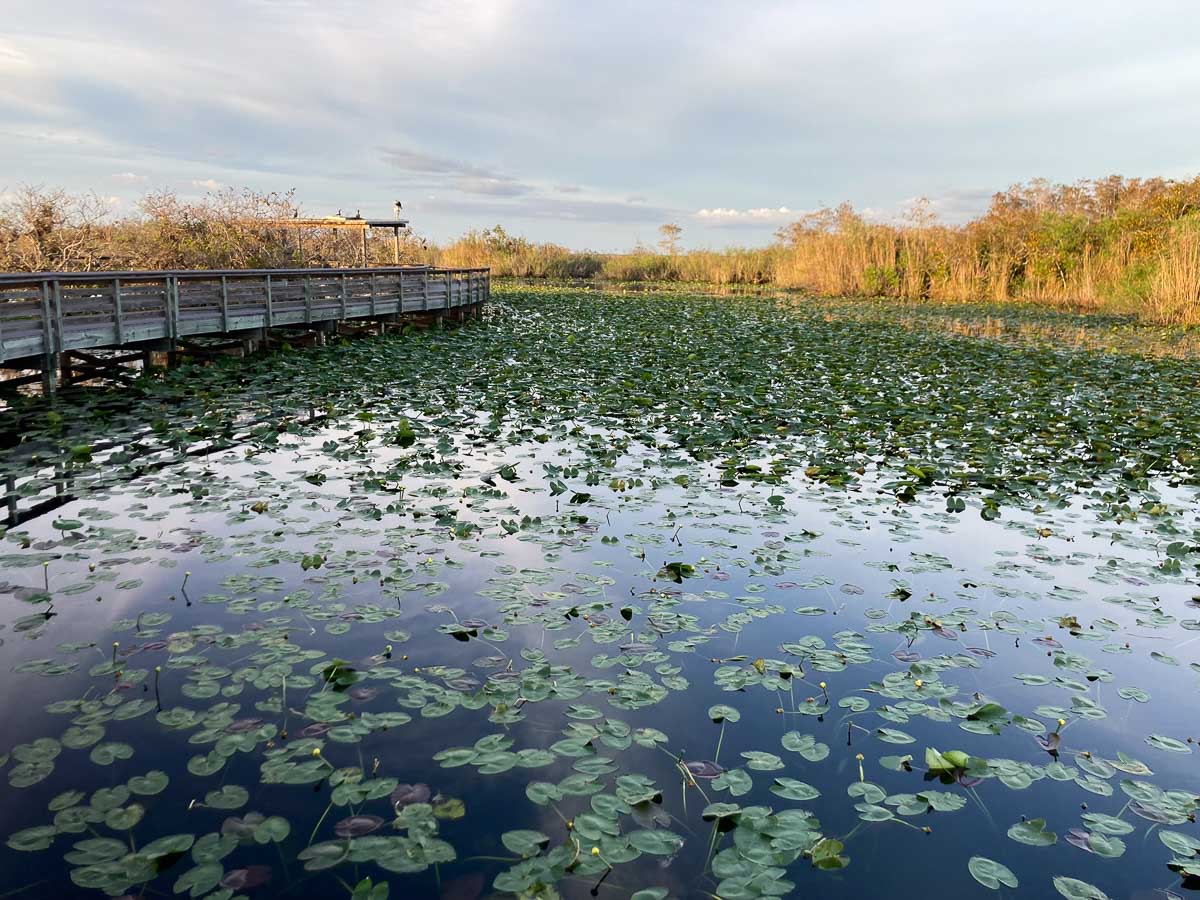
This blog post about the amazing national parks near Miami contains affiliate links. You can read more about our Terms of Use / Disclosure here.
Contents
Amazing National Parks Near Miami, Florida
There are three national parks near Miami, and one national preserve, which I’ve also included in this overview since it’s managed by the National Park Service, too.
As I mentioned in the intro, all Miami national parks are about water. Two of them you can only reach or explore by boat (or floatplane), while the other two encompass marshes, cypress swamps, ponds, waterways, shallow bays, as well as some forests.
That doesn’t mean there’s nothing to see or do, though. In fact, these Miami national parks are fantastic year-round destinations (although summer does come with extremely high humidity and bugs, especially in the Everglades).
As you’ll see below, the trio of South Florida national parks boast a spectacular amount of wildlife and have exceptional outdoor recreation opportunities.
Different from pretty much all other U.S. national parks, they’re so close to the city of Miami or Miami Beach you can visit them all in about a week’s time.
Biscayne National Park
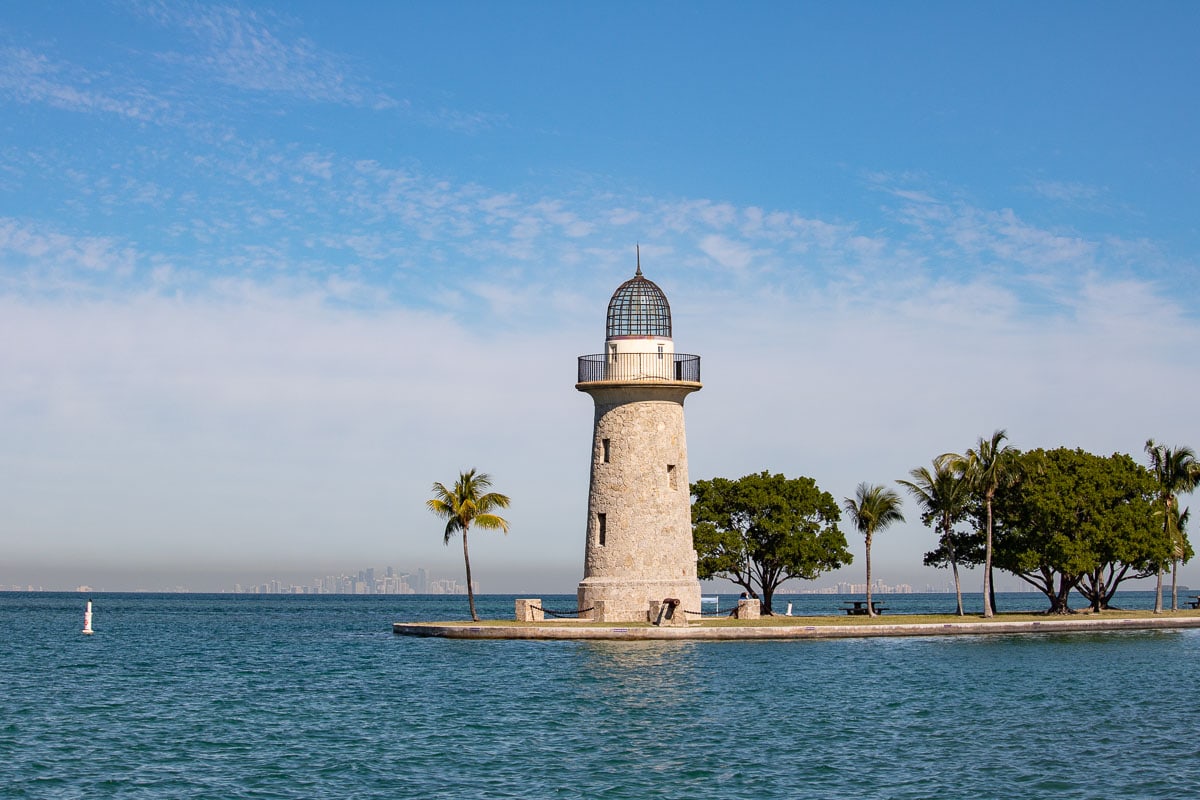
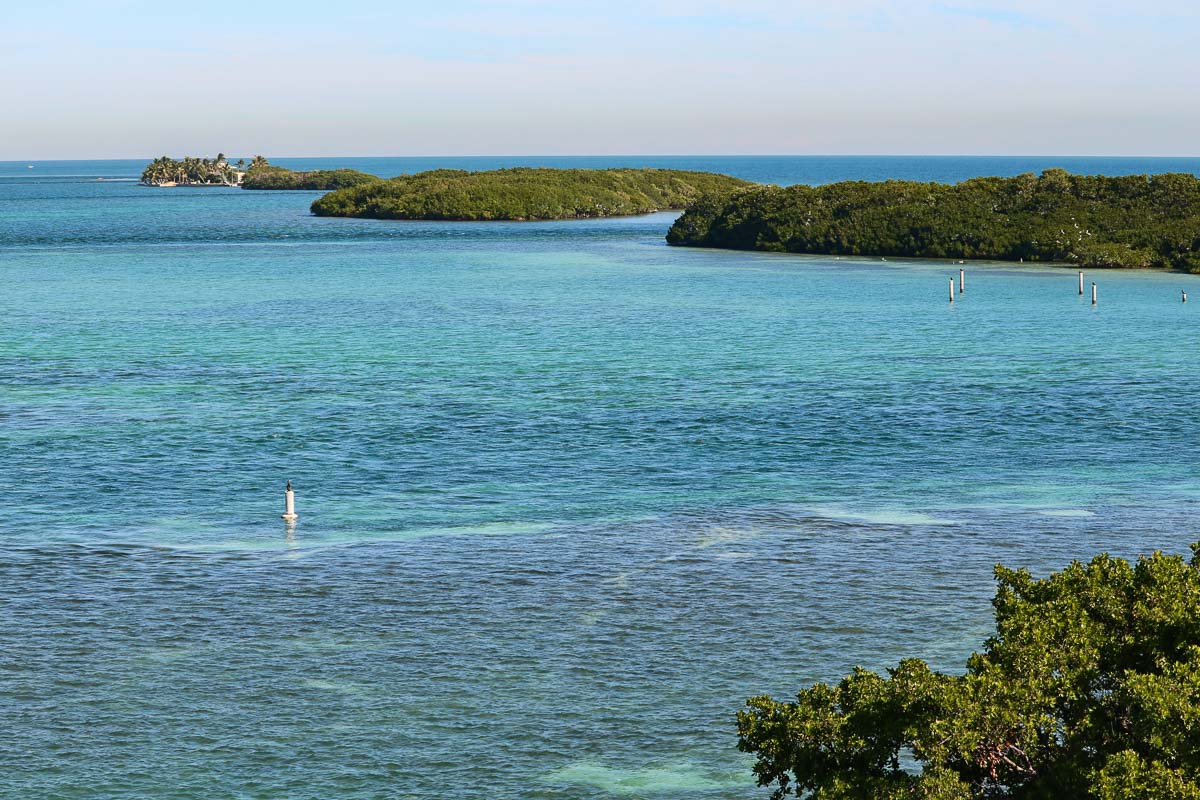
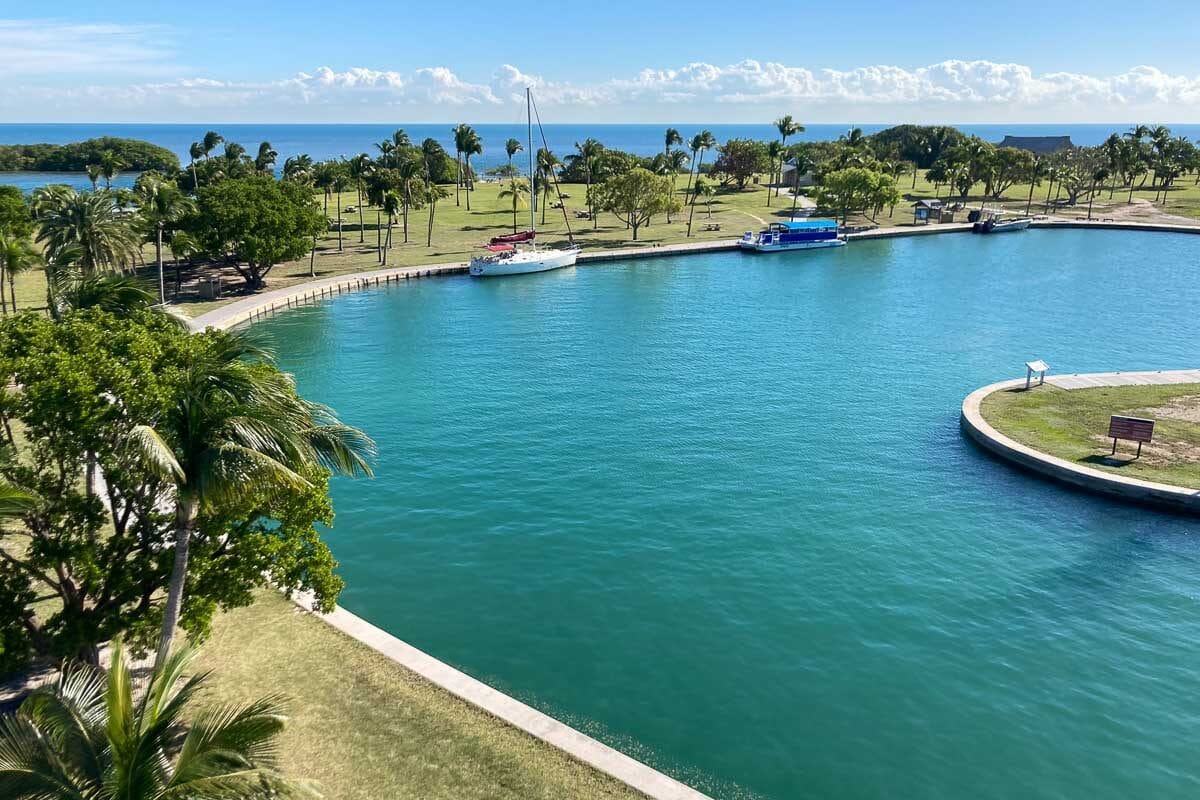
One of the most accessible national parks from any major U.S. city. Biscayne National Park protects Biscayne Bay just south of Miami. You can even see the Miami skyline from certain places in the park.
Of all three national parks in south Florida, this is by far the closest. It’s a figurative stone’s throw from Miami, yet a world away.
Up to 95% percent of this island national park consists of water. Land areas include mangrove forests along the bay, Elliott Key, which is the first of the Florida Keys, and a few minor islands. While there are some land-based attractions here, the real treat lies underwater.
Biscayne National Park protects the northernmost area of the Florida Reef, one of the world’s largest coral reefs. It’s a prime destination for snorkeling and scuba diving, home to hundreds of fish species and other marine creatures.
In addition to superb natural beauty, human history is abundant as well, from pirate hideouts to presidential retreats.
Although there are three accessible islands in the park, Biscayne National Park camping is only allowed on two of them. You can pitch your tent at Elliott Key and popular Boca Chita Key, while Adams Key is a day use-only island.
It’s also worth noting that this is the only national park in America that has an underwater trail!
The Maritime Heritage Trail is a scuba diving trail that takes divers to six shipwrecks and the Fowey Rocks Lighthouse. Some of the sites are suitable for snorkeling, too. Access to the trail is by boat only.
The only accessible mainland part of Biscayne National Park is the Dante Fascell Visitor Center at Convoy Point. Access to the rest of this off-shore national park is possible only by private or concessioner kayak or boat.
More About Biscayne National Park
Everglades National Park
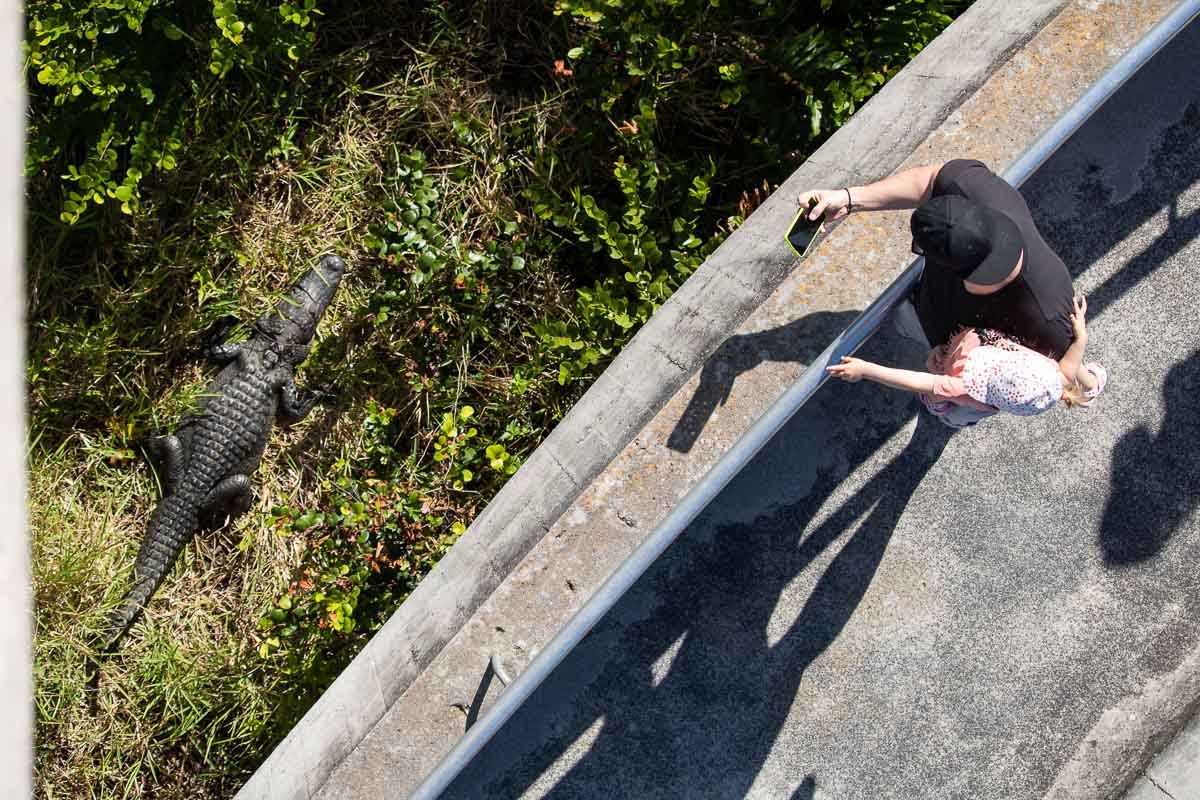
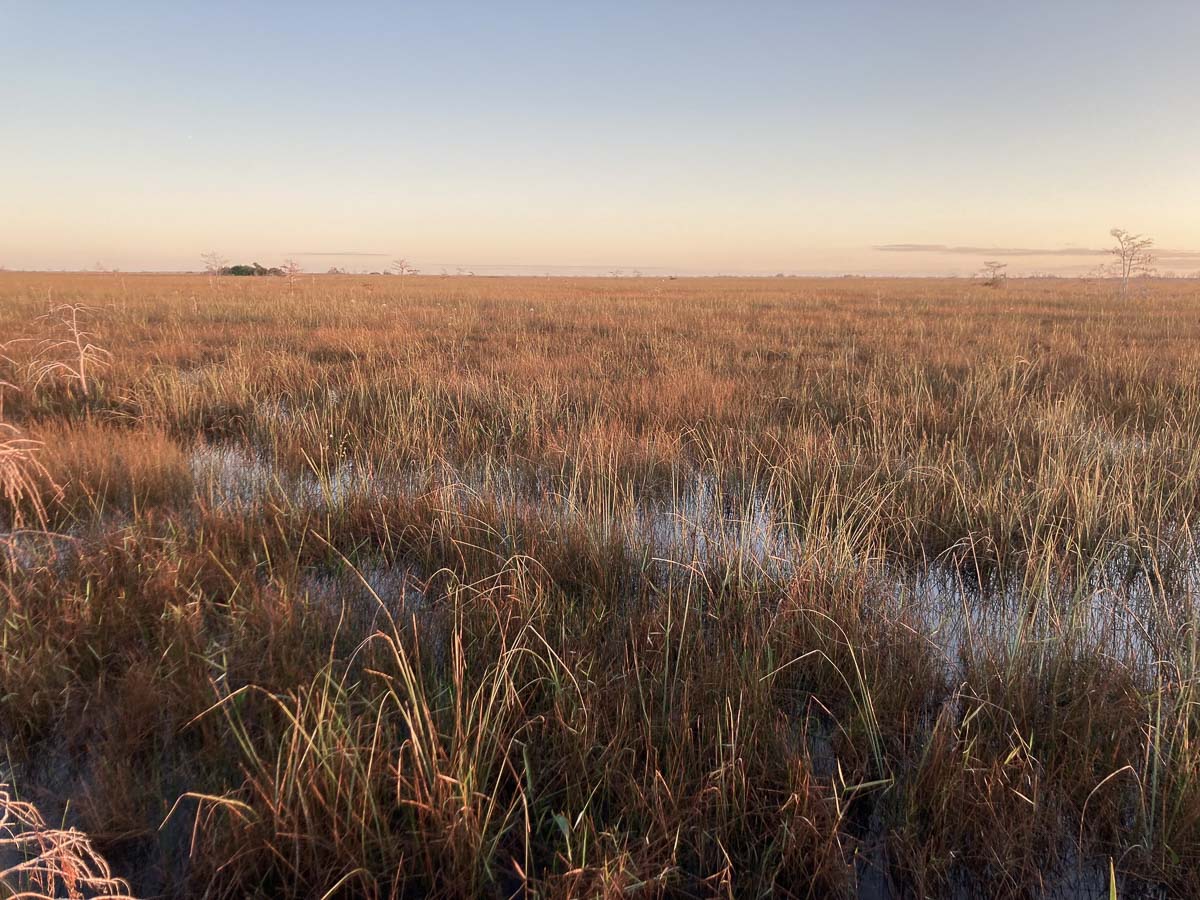
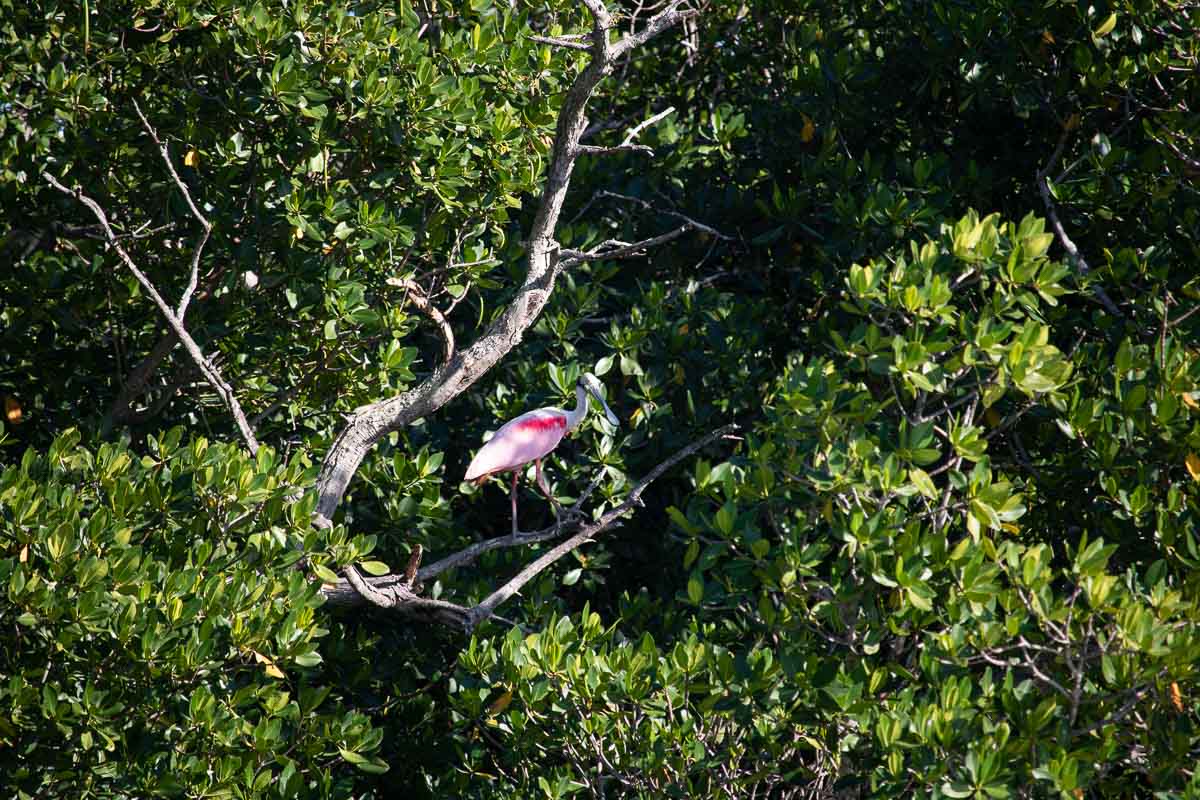
The vastness of Everglades National Park is difficult to put in words. I can hit you with some facts, though.
This is the third-largest national park in the contiguous United States, after Death Valley and Yellowstone. It’s also the largest tropical wilderness in the country and the largest mangrove ecosystem in the Western Hemisphere.
The Everglades encompass most of the southernmost tip of the Florida panhandle, located a quick drive to the southwest of Miami.
Arguably the most famous of the national parks near Miami, the Everglades is a paradise for birders and wildlife watchers.
Its biodiversity is just sensational, highlighted by the fact that this is one of only three places on Earth that are a UNESCO World Heritage Site, an International Biosphere Reserve and a Wetland of International Importance.
While most American national parks protect specific geographic characteristics of a landscape, Everglades National Park was the very first that was created to preserve an ecosystem.
Its immense network of wetlands, waterways and forests is unique in the world. Nicknamed “the river of grass”, Everglades National Park is a hugely important feeding and breeding area for countless birds, and a habitat for fresh- and saltwater fish.
Famous Everglades birds include anhingas, cormorants, various egrets and herons, roseate spoonbills, white ibis, osprey and hawks, purple gallinules, woodpeckers and terns.
Additionally, it’s also a last refuge for threatened animals such as the West Indian manatee, the Florida panther and the American crocodile. And famously, the Everglades are home to literally hundreds of thousands of alligators, too.
Wildlife watching is without question the number one thing to do at the Everglades. The best ways to spot wildlife are hiking, kayaking, and guided boat tours.
More About Everglades National Park
- Park Website
- Travel Guide
- Topographic Map
- Where to See Wildlife in Everglades National Park
- Top Places to Visit on the Everglades Main Park Road
- What to Do in Flamingo, Everglades
- What to Do in Shark Valley, Everglades
- Best Everglades Bike Trails
- Accommodation
Dry Tortugas National Park
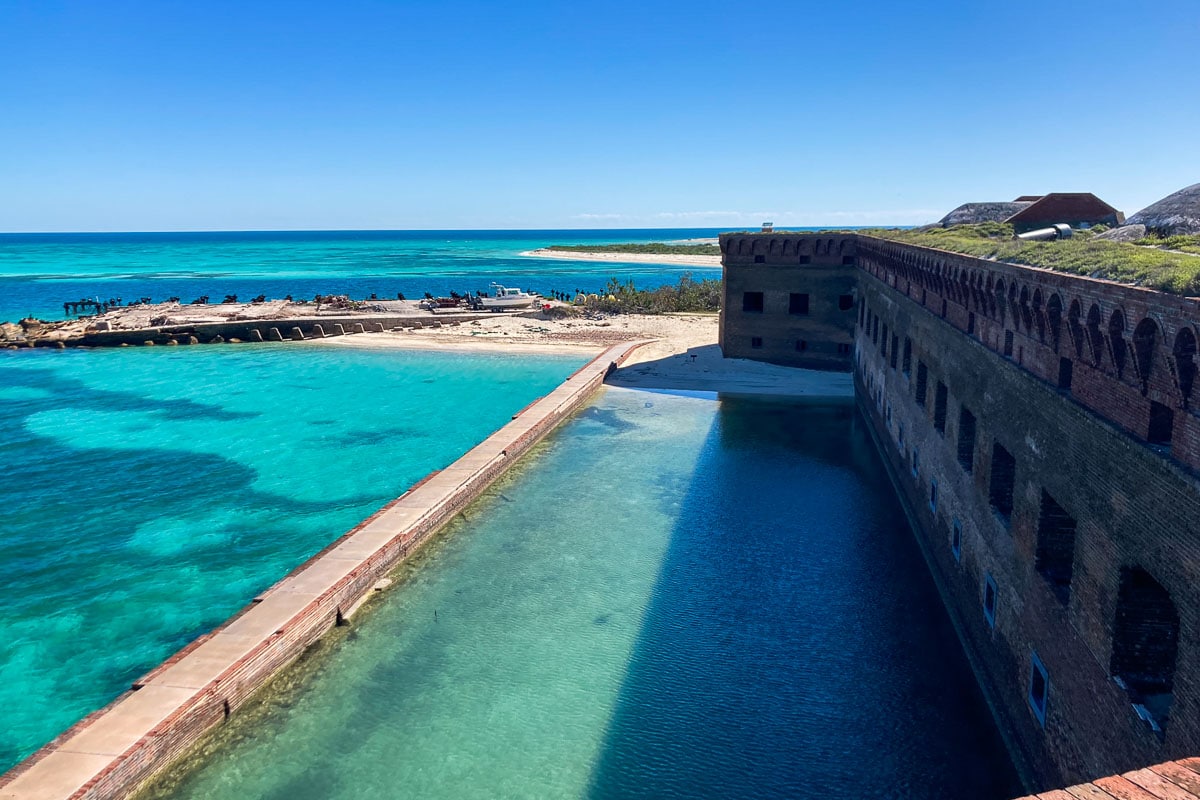
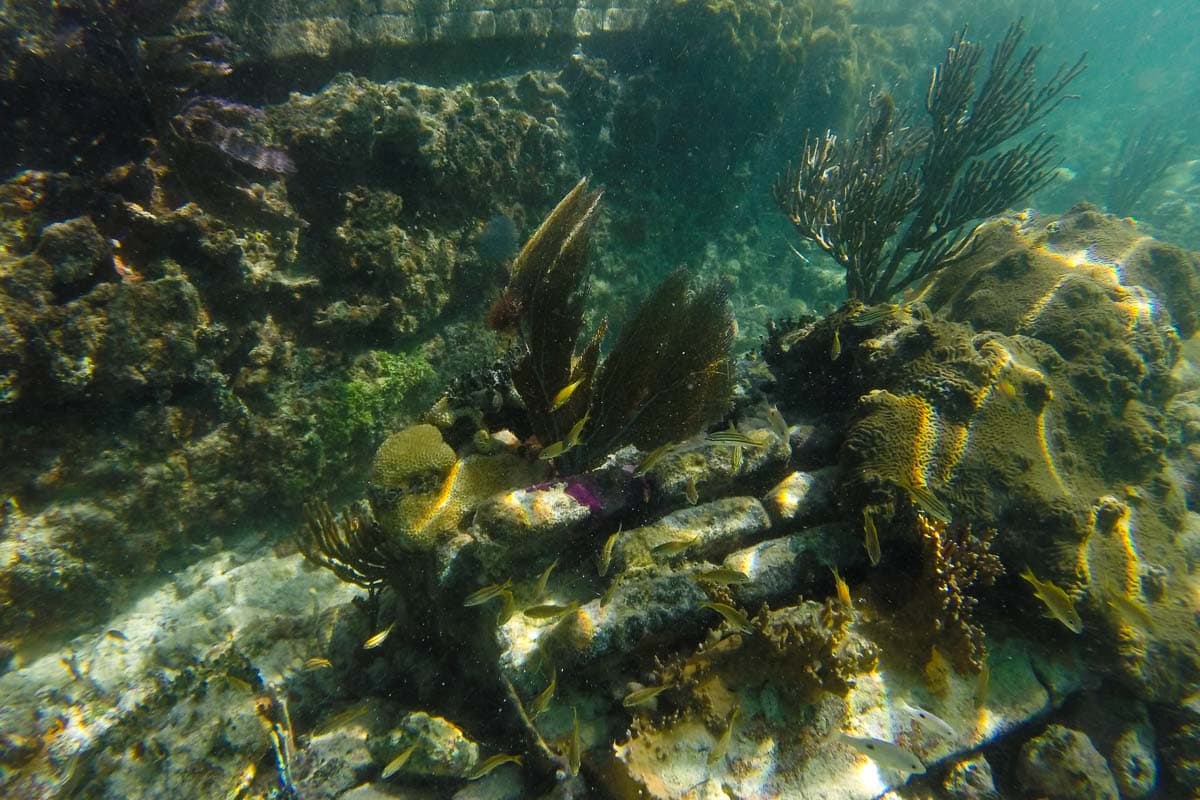
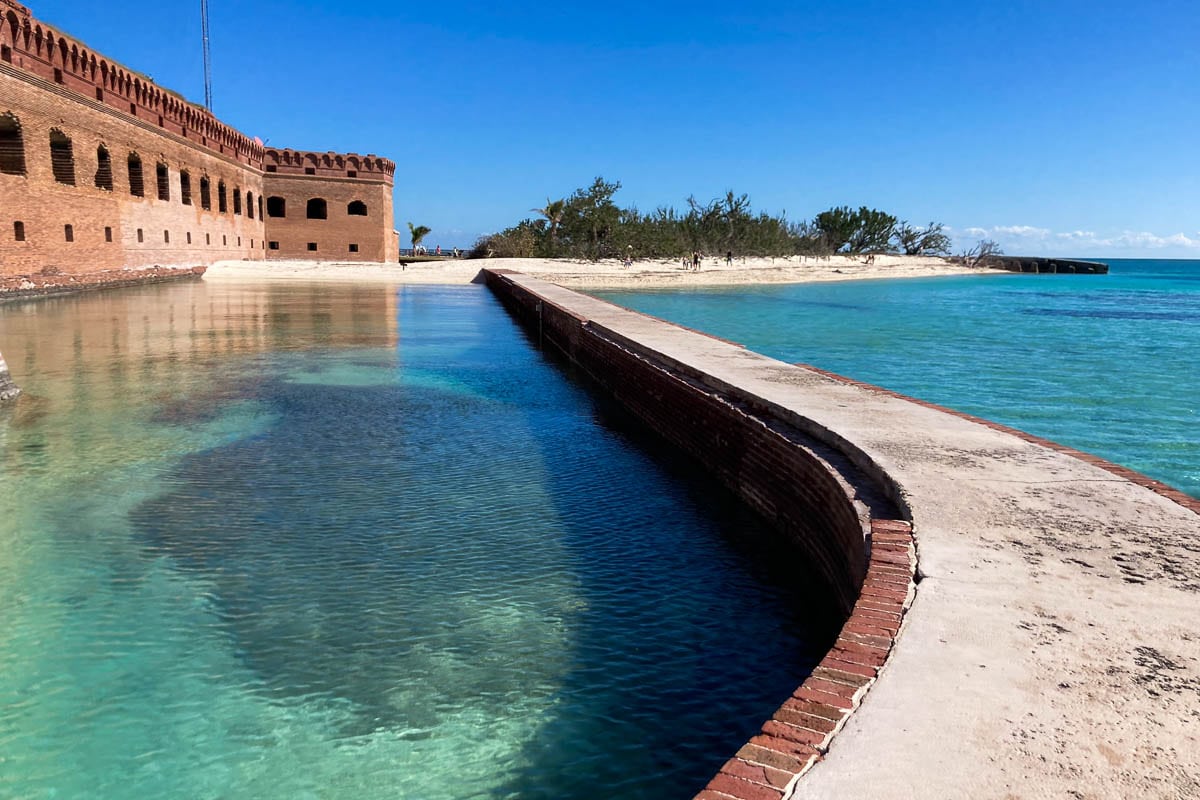
A national park in the Florida Keys, Dry Tortugas National Park is the most remote Florida national park.
Accessible only by boat or floatplane, it encompasses seven small islands nearly 70 miles west of Key West. It’s one of the most inaccessible national parks in America.
The park is 100 square miles in size, but only about 1% of this is dry land. On that land, you’ll find imposing Fort Jefferson, the Western Hemisphere’s largest brick building and the only main landmark in the entire park.
Note that you can actually camp near Fort Jefferson if you’re interested in that. The ferry from Key West only takes ten campers a day to the Garden Key Campground, where all sites are available on a first-come first-served basis.
You’ll also need to bring all your supplies, food and water. The only facilities on the island are composting toilets.
Besides Garden Key, the rest of Dry Tortugas is made up of glorious coral reefs, crystal-clear waters and an abundance of marine life. Needless to say, this is a sensation park for snorkeling and scuba diving.
Don’t forget your mask and flippers!
More About Dry Tortugas National Park
Big Cypress National Preserve
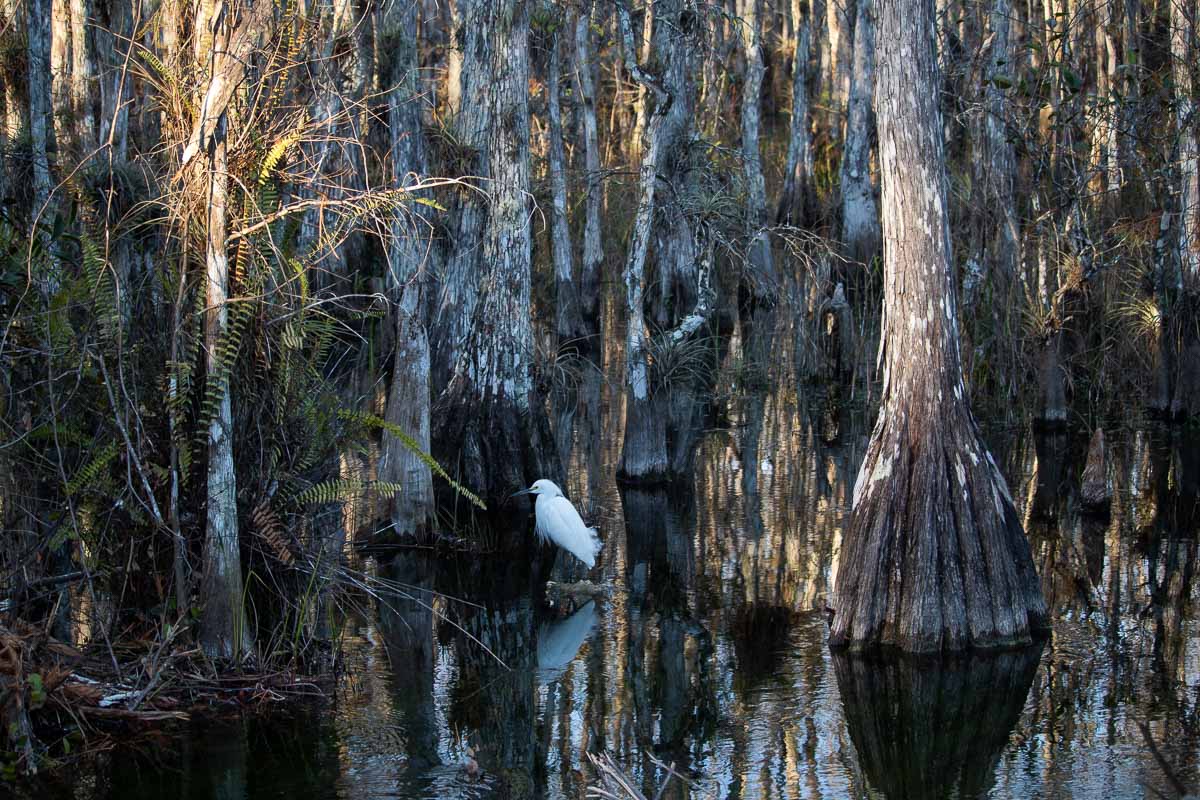
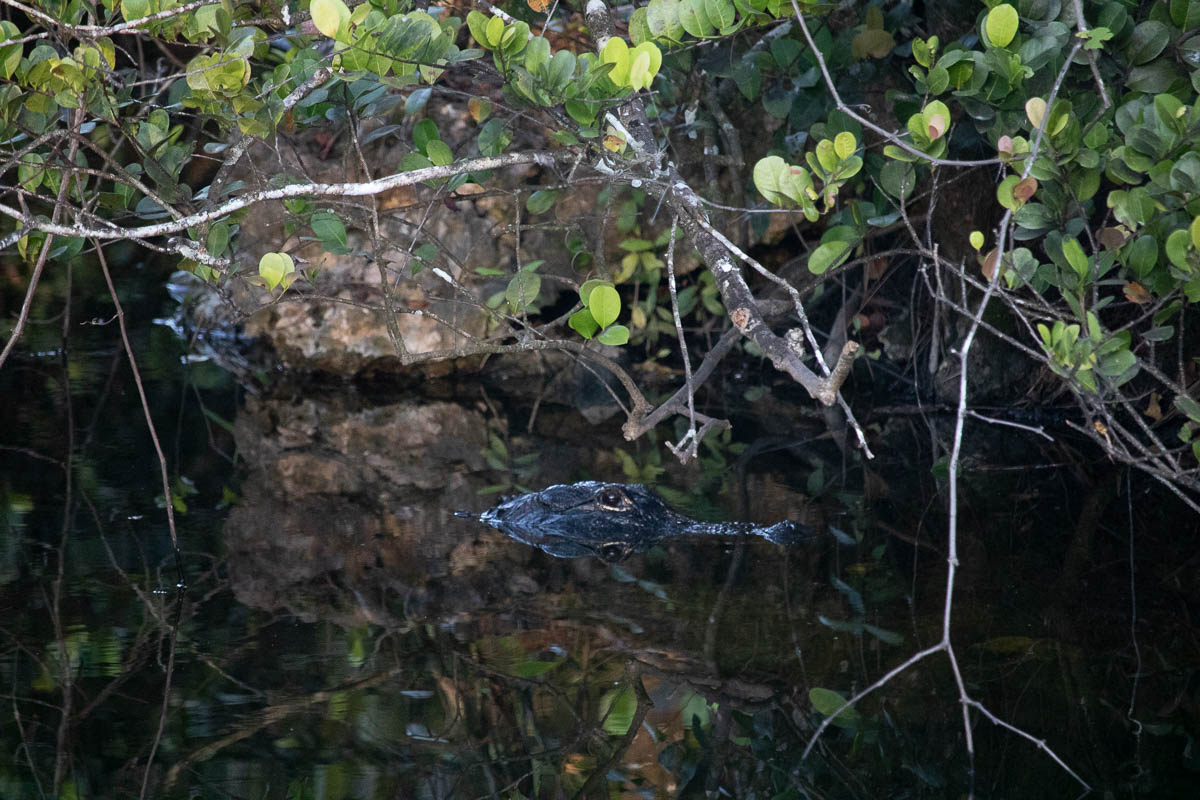
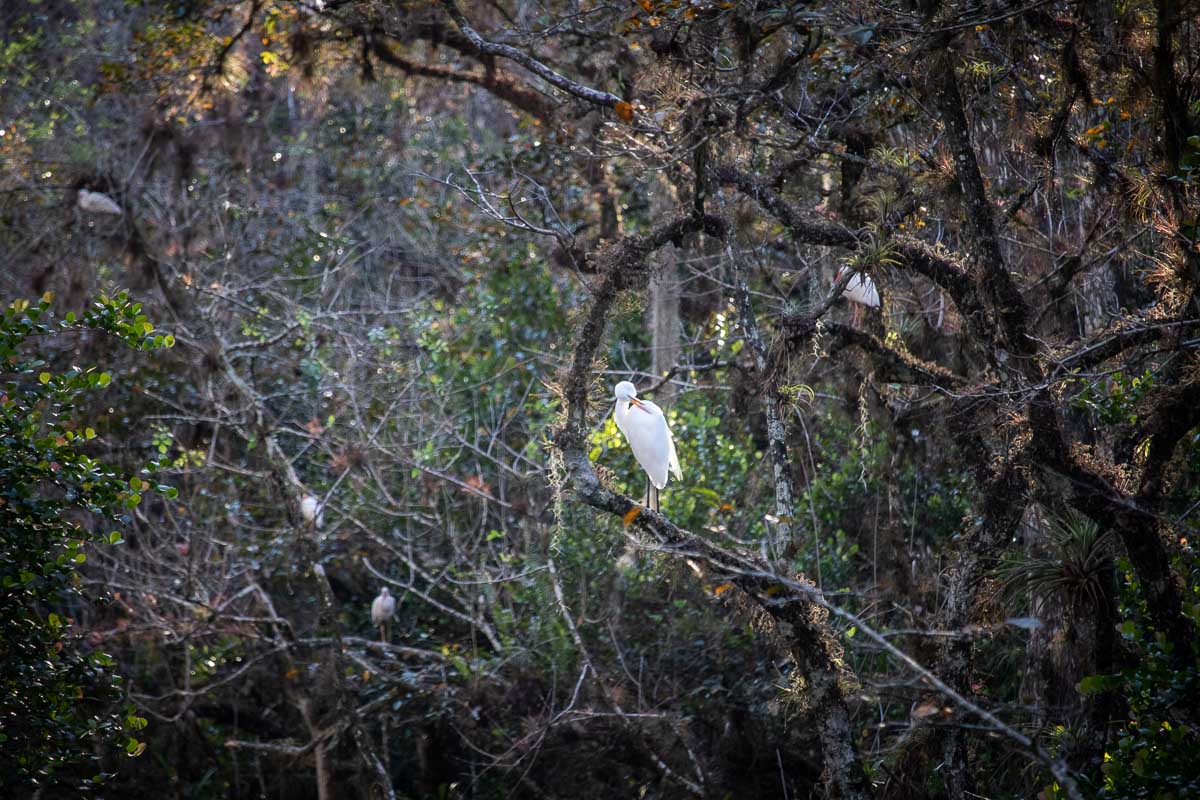
When they were created in 1974, Big Thicket National Preserve in Texas and Florida’s Big Cypress National Preserve were the first of their kind in the National Park Service system.
The Big Cypress Swamp lies north of and borders Everglades National Park, with which it shares a wetland ecosystem.
The freshwater in this huge preserve are vital for the well-being of everything that lives in the Everglades, supporting the marine estuaries along the southwest coast of Florida.
Although this is technically not one of the three national parks near Miami, it’s a National Park Service site, nonetheless, and an extremely important biotope.
It’s home to a wealth of fauna and flora. You’ll find abundant water plants and animals here, such as mangroves, orchids, alligators and crocodiles, river otters, herons and egrets.
Additionally, there’s also a surprisingly large number of land animals in Big Cypress National Preserve. Those include the elusive Florida panther, diamondback rattlesnakes and even black bears.
While the Everglades caters mainly to fishermen, boaters, canoeists and kayakers, Big Cypress is a superb destination for camping. Everglades National Park has only two frontcountry campgrounds, but Big Cypress has eight of them. It’s arguably the best place for camping trips from Miami.
Big Cypress National Preserve may be the most underrated of all parks near Miami, but as such, it has the most potential for a pleasant surprise as well. Don’t miss it!
Have You Ever Visited Any of These Beautiful National Parks Near Miami, Florida? Tell Us About Your Experiences in the Comments Below!
Other Great Cities For National Park Visits
- Best Nature Day Trips from Portland, Oregon
- Best State and National Parks near Las Vegas, Nevada
- National Park Service Sites Within a Day’s Drive from Houston, Texas
- Best National Parks near Los Angeles, California
- Top National Parks near San Francisco, California
- Colorado National Parks near Denver
- All National Parks near San Diego, California
